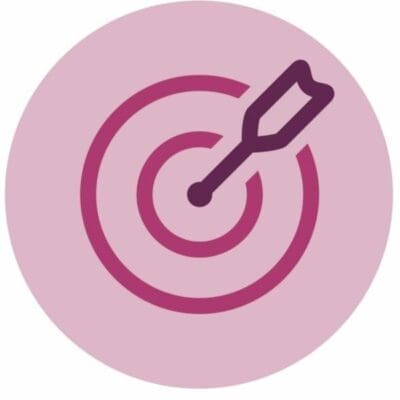Where to Start and How to See it Through
Your business wouldn’t work without your employees. In fact, 71 per cent of CEOs believe that employees are a company’s most important asset. That’s the main belief behind human resource planning, too.
Good employees aren’t as easy to find as they were ten years ago. It seems that everyone is willing to get a job, but few people are willing to start a career. If you want to hire an employee that will commit to your company long-term, you have to put in some work. That work is called human resource planning. You’ll need to look at where your company is today, where you want it to be, and what the market is trending towards.
Then, and only then, you can start planning to hire the best employees available. Want someone to walk you through this detailed process?
Don’t worry, we’ve laid it all out below.
What is Human Resource Planning?
HR planning confuses some people because they think it only refers to the HR department. That’s not true. Your human resources are every single employee that has signed a contract with you. The planning part involves looking at your current processes. Where and what are your employees succeeding at? Where do there seem to be stuck points in the process? Do you have one branch of your store that can’t seem to retain employees? Why is that? It also means thinking about the future.
How are things like Brexit and tariffs going to affect your workforce? Will you lose employees to the new immigration regulations? Maybe you’ll need to provide a different set of visas.
What about technology? Are your workers at risk of being replaced by AI or new tech? How can you keep your business up-to-date and efficient without letting valuable people go? That’s the idea of human resource planning. It’s looking through your workforce, the processes they complete, and the future of your business from a human perspective.
What are the Objectives?
Isn’t it funny that to create a plan, you need to have goals for that plan? Those are the objectives of your HR strategic plan. They give you guidelines on what to expect during the process.

Sticky Learning ® is 7 times more effective than 1-day training courses. Plus, you will get a Chain of Evidence proving your Return on Investment. Discover soft skills training that changes behaviours long term.

1. Quality and Quantity
To run a successful business you need a number of quality employees. It’s a delicate balance. One really great employer inspires others to be great. But one terrible employee shows others that they can get away with doing less. You want to weed out those who underperform and make an example of those that go above and beyond.
2. Predict and Minimise Turnover
If you’re going through a merger, or sales are going to drop off after a busy holiday season, you can expect to lose some employees. You need to predict that turnover so you aren’t left empty-handed. Can you start hiring and not pull the final trigger until the holidays are over? Or, you could consider minimising the turnover you’re already expecting by offering higher benefits for those that stay.
3. Meet Expansion and Diversification Requirements
Let’s say that you’re under pressure from corporate to diversify your staff. How do you do that without typecasting and only hiring people for their race? It’s a hard line to walk. Think about new places where you can advertise your job openings. Are there colleges or career centres in parts of town you don’t usually frequent? Start there.
4. Anticipate New Technology
Let’s say that you’re in an industry that’s slowly being automated. Like the supermarket industry. More and more people are using apps that do their shopping and deliver it to them. Does that mean, eventually that grocery shopping will be more of a fulfilment service than a hands-on face-to-face interaction? How are you going to keep your workforce and not lose valuable talent to tech?
You need to think of these things well in advance, if not only to quell employee fears. Yes, you may have to lose a few cashiers, but it’s up to you to let lifelong employees know that you’re interested in growing and changing with their help – not without it.
5. Set Behavior Standards
You won’t always have the HR staff you have today. Eventually, your team will change and they’ll take their on-job experiences with them. How can you create a recording or issues that come up for future use? For example, let’s say you have one employee at risk of deportation from Brexit. You handle it and they stay in the country.
How do you record the steps you took so someone could solve a similar problem in the future? You want someone who’s never done the human resource planning process to open up your guide and know exactly what to do.

6. Predict HR Shortages
Sometimes you’re going to have a turnover that leads to HR employees leaving their posts. How will you find more qualified professionals to fill their positions? Ideally, you’d want someone who’s already familiar with the company. They need to possess the beginnings of persuasion skills. You can teach them a bit, but they won’t be able to start from zilch. This training is great for creating a persuasive HR professional and it’s cost-effective.
7. Consider B2B
We know you have a lot on your plate managing employees and anything HR related. But your duties extend beyond internal workers. You also need to keep a careful eye on interactions between businesses.
If an employee from a supplier or a service you employed treated your employee badly, you’d reach out to their HR, right? And vice versa. How would you handle a problem between your company and another? You should at least write up an “I’m sorry and here’s what we’re doing to fix it” email draft that you can personalise if the time comes.
Benefits of Human Resource Planning
Now that you know a little bit about how and what you’re doing during the planning stage, let’s talk about why. Why should you do all this work? Well, the benefits of human resource planning more than make up for the work it takes.
- With a good human resource planning guide in place, you can
- Meet and exceed requirements
- Succeed in the face of insecurity and change
- Keep your labour forces balanced
- Fine-tune your human resources team
- Make sure your organisation is diverse
- Fulfil your employee’s needs
- Have a jumping-off point for issues
- Stay ahead on job replacement due to technology.
Sounds good, right? What would you do if you were handed a binder with all the above sections filled out when you’d started? It would’ve made your job much easier. Do that for your future self and future employees by turning the above objectives into action items.

The Objectives as Action Items
We just presented a lot of information. You not only got the benefits of human resource planning, but you got the objectives. What are you supposed to do with that? We’ll go into the four main points of research planning later, but here are the objectives in question form for your convenience.
1. Questions for Objective 1: Quality and Quantity
- How do you balance quality and quantity of employees without overworking good workers?
- How do you make examples of your best workers?
- What is your process for re-training underperforming employees and how do you assess progress?
- How quickly will you fire an underperforming employee if they don’t improve?
2. Questions for Objective 2: Turnover
- When is your highest turnover currently?
- Do you see that changing?
- When is your industry’s highest turnover? Does it match yours?
- How can you encourage employees who may leave to stay?
- How do you express the length of employment to temporary employees?
3. Questions for Objective 3: Diversification
- What are the expectations for diversity in your workforce?
- Are you meeting those expectations?
- Where are you low?
- Where aren’t you recruiting that you could be recruiting?
4. Questions for Objective 4: Technology Advances
- What are the leaders in your industry doing?
- Do your competitors have apps?
- If so, how do those apps impact your current workforce?
- Which employees are you willing to lose to technological advances?
- How will you communicate potential loss?
- What is your severance package?
- Do you have the budget for these new advances?
5. Questions for Objective 5: HR Standards
- Do employees have access to your current handbook?
- Are they encouraged or quizzed on your expectations?
- Do you keep a record of HR problems and how you handled them?
- How could you keep a record, if not?
6. Questions for Objective 6: HR Shortages
- How do you train new HR employees?
- Is there a ladder for newer employees to climb?
- How can you streamline your training process without losing quality?
- Who would you promote to HR if you had to choose from your current workforce?
7. Questions for Objective 7: B2B Considerations
- Is there a record of an HR issue that affected two businesses?
- How was it handled?
- Where do interactions between businesses lie?
- What potential issues do those interactions pose?
This is your step-by-step resource planning guide. If you can answer and record the answers to all these questions, then answering the next four questions should be easy. And you deserve a break!
The Four Questions

When it comes to HR planning, there are four main sections we’re going to address. We’ve already mentioned them, but here they are in order:
- What is your workforce like, quantity-wise and quality-wise?
- What skills and abilities are necessary for each position?
- Are you using your HR department to its potential and if not, how can you ask them to do more?
- How do you plan to retain your best employees?
Be open and honest with yourself about your company. Talk to managers and people who have more on-the-ground access than you do if you need help answering a question. Use your human resources to populate your human resource planning.
If you don’t, it won’t be as complete as it could be. Let your employees know that you’re trying to ensure that the company succeeds — and they should be glad to help. You may want to do this anonymously since stuck points and problem areas can seem scary to report.
Stuck Points in HRP
We never said this process would be easy. It’s a huge workload on top of your current one. Not only can you expect some pushback when you ask about or propose a change, but there are problems in the HR plan process.
The most common ones are:
- Inaccuracy of predictions
- Uncertainties – extraneous variables
- Problem with company records, from the past or currently
- Employee resistance (more work)
- Time and expense while creating the plan.
Convincing your employees or even your managers to do this planning may take some time. You can educate them on the benefits of human resource planning, as noted above. As an extra step, you should take this online course on influencing skills.
It’s so much better to have proven and practised skills in your back pocket when trying to get someone to approve a new process. In fact, everyone can benefit from this training. It’ll smooth over everything from management to interactions with your clients. You really can’t go wrong with adding some persuasion to your HR strategy.
Strategic Human Resource Management Plan
Now that you have everything you need, you can go forward and make your company a better place to work. Your profits will improve when you invest in your employees.
The happier your employees, the happier your clients are, and the happier your profits. Take the time to invest in human resource planning, and you’ll be overjoyed that you did so.
To learn more about Human Resource Planning and how implementation, watch our exclusive interview with David Frost, Organisational Development Director of Total Produce Plc:





